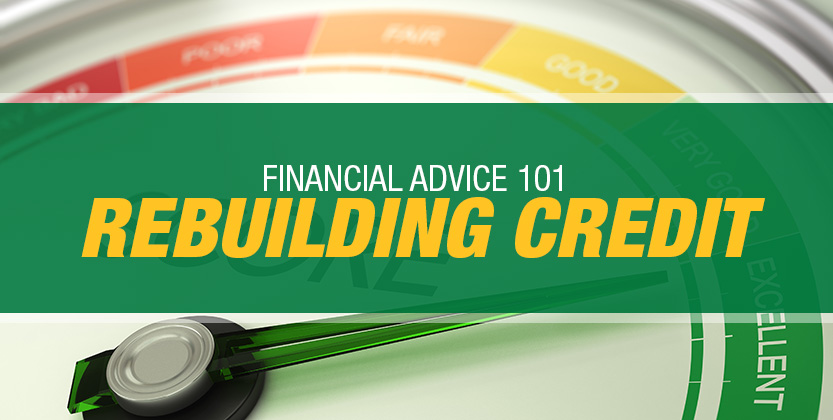
How to Rebuild Your Credit Score
Good credit comes with numerous benefits, such as eligibility for low-interest personal loans and credit cards. Your score reflects how you handle debt—and regular payments will help rebuild your credit. Here, we’ll offer some tips on earning a better credit score.
Rebuilding Credit Fast: Is It Possible?
In certain instances, it’s possible to boost credit scores quickly. Certain factors affect your score, such as:
- The amount of debt owed.
- Your payment history.
- The type of credit you have.
- The length of your credit history.
- Any new accounts opened.
Some of these factors, like credit history length and payment history, are challenging to improve quickly, even with a debt consolidation loan. However, if your credit is damaged due to irresponsible usage, you’re in luck. Simply pay down these balances to the extent possible, and the issuers will report to the major credit bureaus at least once per month.
If you are rebuilding credit after late payments or a default, the process will be more time-consuming. Scoring models and creditors typically like to see a minimum of six months of good payment history before they start forgiving your mistakes. Furthermore, it may take seven to ten years for negative items to drop off your credit report. If there’s an error, though, disputing it with the appropriate bureau may rebuild your credit more quickly.
Catch Up On Payments
Before taking any other steps to rebuild credit, ensure that all accounts are current. An account more than a month past due can adversely affect your credit, and the longer it’s in default, the worse the problems will become. If you’re finding it hard to catch up, try to make a payment arrangement with the issuer.
Pay Down the Highest Balances First
One of the biggest factors in your credit score is known as the credit utilization ratio. This is a breakdown of the amount owed vs. available credit. For instance, a card with a $700 balance and a $1000 limit has a 70% utilization ratio. High utilization tells creditors that you may have acquired too much debt, and it can hurt your score. By paying down these balances and keeping utilization at 30% or below, it’s possible to improve your score.
Get a Secured Card
To rebuild credit, a positive payment history is essential. However, if your credit has taken a few hits, it may be hard to qualify for a card with which you can build that history. That’s where secured cards come in. They’re easy to obtain, even for those with bad credit, because they use cash deposits to minimize the issuer’s risk. After the balance is paid and the account is closed, you’ll get the deposit back. In some cases, issuers will automatically make these accounts unsecured.
Become a User On Another Person’s Card
Another good way to build a better credit score is to sign on to someone else’s card. Upon becoming an authorized user, you’ll get a card in your name, with the primary user assuming responsibility for all charges. Here, card issuers typically report both users’ accounts to the credit bureaus. If the account remains in good standing, becoming an authorized user will boost your score.
Create a Budget
Even the best credit rebuilding strategies will fail if underlying problems aren’t addressed. In most cases, these issues boil down to poor budgeting. A reasonable budget will help you pay down debt and prevent future reoccurrences.
Monitor Your Scores and Reports
As you’re rebuilding credit, don’t forget to keep an eye on your scores and reports. Many card companies offer free monthly scores, especially on their credit building offerings. Additionally, you can get a free yearly copy of each bureau’s report via annualcreditreport.com. If any errors are found, dispute them immediately.
Be Patient
Unfortunately, time is one of the only real ways to rebuild good credit. Defaulted accounts and delinquent payments don’t disappear quickly. It can take several years of positive payment history to recover from a big mistake—especially when those errors can stay on your report for seven years or more. If you’re doing all the right things but not seeing many changes, just wait. As with other things in life, time heals most wounds.
How Long Does It Take to Rebuild Credit?
Every person’s credit profile is different. Therefore, the best way to rebuild credit depends on your unique history and why you’re having problems. A low score brought on by high balances is the easiest thing to fix; paying down a high balance will bring your score up in a month or less.
Conversely, if you’re rebuilding credit after a default, the process will take a bit longer. It’ll take six months to a year to bring your score back up—and years for those negative items to go away. Thankfully, their effects diminish with age, especially if you’re building a good payment history.
What to Look For and Things to Avoid
Many people have successfully rebuilt their credit with new cards. However, some cards can make things worse. Try to stay away from predatory issuers, especially those marketing unsecured cards toward those with poor credit. Instead, opt for a secured card to rebuild your credit history.
The best cards for rebuilding credit have low costs and make monthly reports to the major credit bureaus. If you’ve established a good relationship with a local bank or credit union, they’re great places to find secured cards. Choose one that may allow later graduation to an unsecured card.
Using a Loan to Rebuild Credit
It’s possible to rebuild credit with a loan that reports timely payments, including consolidation loans. It can be tough to get a loan with bad credit, but certain products, known as credit-building loans, can help. They come with short terms and reasonable rates, but unlike regular loans, you can’t access the money right away. Rather, the lender puts the money aside, and you’ll get it when the loan is paid. You’ll make monthly payments, which are reported to all three bureaus.
In Conclusion
With proper money management, great credit is within your reach. With time, patience, budgeting, careful credit monitoring, secured cards, and other approaches, it’s possible to build (or rebuild) a good credit history.

